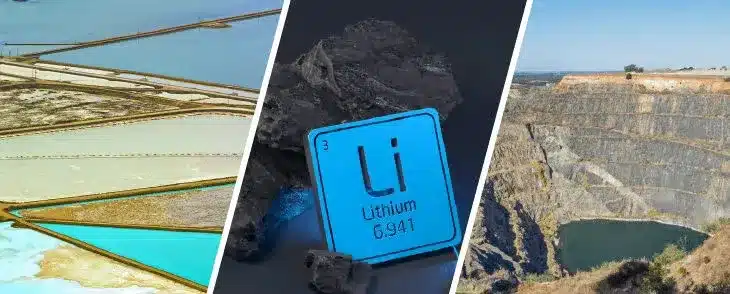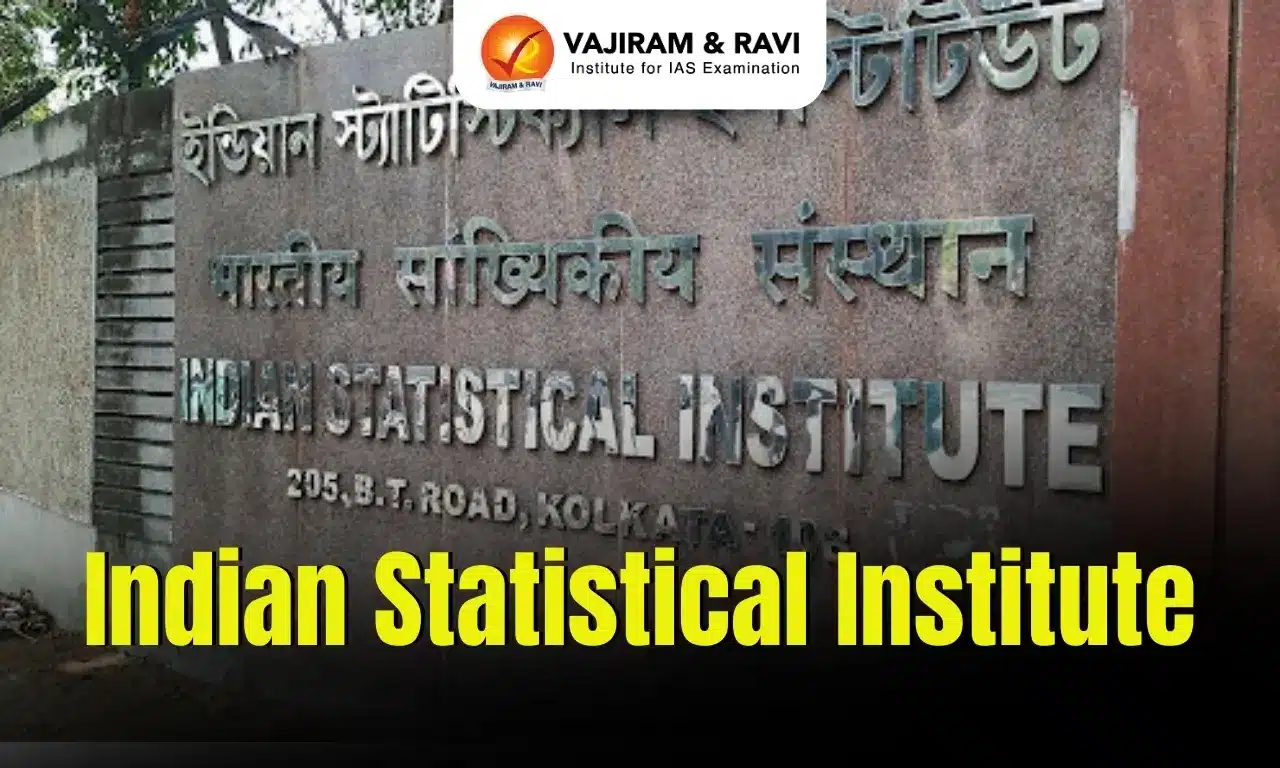What’s in today’s article?
- Why in News?
- What is Lithium Mining?
- Lithium Reserves and Mining in India
- Environmental Challenges Posed by Lithium Mining
- Fallouts of Lithium Mining in Chile
Why in News?
- According to a new study, Chile’s Atacama salt flat (flat expanses of ground covered with salt and other minerals) is sinking at a rate of 1 to 2 cm per year due to lithium brine extraction.
- The process of extracting lithium from brine involves pumping salt-rich water to the top and through a sequence of evaporation ponds in order to recover lithium.
What is Lithium Mining?

- Lithium mining refers to the extraction of lithium primarily from brine water and hard-rock (spodumene) deposits.
- Brine extraction, which accounts for 66% of the total lithium production, involves pumping underground brine to the surface and allowing the water to evaporate, leaving behind lithium carbonate.
- Hard-rock mining involves extracting lithium-bearing minerals from rock through traditional mining techniques.
- Lithium production has dramatically increased over the past decade.
- The global output surpassed 100,000 tonnes (tonne = metric ton) for the first time in 2021, a fourfold increase from 2010.
- In 2022, global lithium mines produced an estimated 130,000 metric tons.
Lithium Reserves and Mining in India:

- The Geological Survey of India (GSI) had for the first time in India’s history established Lithium inferred resources of 5.9 million tonnes in Jammu and Kashmir’s Reasi district.
- Months after India’s first lithium reserves, the GSI has found another reserve of the crucial mineral in Degana in Rajasthan’s Nagaur district.
- These reserves are believed to be much bigger in quantity (than found in J&K) and can meet 80% of the total country’s demand.
- The Ministry of Mines successfully auctioned off India’s first lithium block in Chhattisgarh’s Korba district (Katghora region) recently.
Environmental Challenges Posed by Lithium Mining:
- Deplete water resources: Extracting one ton of lithium requires approximately 500,000 litres of water, which can deplete water resources in arid regions and impact local communities and ecosystems.
- Contaminate soil and water sources: The chemicals used in lithium extraction, such as sulfuric acid, can contaminate soil and water sources, posing risks to human health and wildlife.
- Carbon emissions:
- Lithium mining, particularly from hard rock sources, is energy-intensive, requiring substantial electricity for crushing, grinding, and chemical separation processes.
- This energy often comes from non-renewable sources, exacerbating carbon emissions and the carbon footprint of lithium production.
Fallouts of Lithium Mining in Chile:

- The research has shown that lithium mining (over the years) has had severe environmental fallouts, especially in countries such as Chile.
- The satellite data collected between 2020 and 2023 shows deformations in the Earth’s crust of Atacama salt flat – one of the largest sources of lithium in the world.
- The worst affected areas are those where mining companies are doing most of their pumping of lithium-rich brine.
That is happening because the pumping takes place at a faster rate than the recharge of aquifers, leading to subsidence or the downward vertical movement of the Earth’s surface.
Q.1. Why is lithium called white gold?
Lithium is known as “white gold” because of its soft, silvery-white appearance. It’s also a key ingredient in battery storage technology, which powers EVs, stores wind and solar energy, and powers some mobile phones and laptops.
Q.2. What are salt flats and their significance?
Salt flats are large, flat areas of land that are covered in salt and other minerals, usually shining white under the sun. They are natural formations that form when water bodies, like lakes or ponds, evaporate in climates where evaporation is greater than precipitation, such as deserts.
Source: Chile’s Atacama salt flat sinking due to lithium mining: What a new study says
Last updated on November, 2025
→ Check out the latest UPSC Syllabus 2026 here.
→ Join Vajiram & Ravi’s Interview Guidance Programme for expert help to crack your final UPSC stage.
→ UPSC Mains Result 2025 is now out.
→ UPSC Notification 2026 is scheduled to be released on January 14, 2026.
→ UPSC Calendar 2026 is released on 15th May, 2025.
→ The UPSC Vacancy 2025 were released 1129, out of which 979 were for UPSC CSE and remaining 150 are for UPSC IFoS.
→ UPSC Prelims 2026 will be conducted on 24th May, 2026 & UPSC Mains 2026 will be conducted on 21st August 2026.
→ The UPSC Selection Process is of 3 stages-Prelims, Mains and Interview.
→ UPSC Result 2024 is released with latest UPSC Marksheet 2024. Check Now!
→ UPSC Prelims Result 2025 is out now for the CSE held on 25 May 2025.
→ UPSC Toppers List 2024 is released now. Shakti Dubey is UPSC AIR 1 2024 Topper.
→ UPSC Prelims Question Paper 2025 and Unofficial Prelims Answer Key 2025 are available now.
→ UPSC Mains Question Paper 2025 is out for Essay, GS 1, 2, 3 & GS 4.
→ UPSC Mains Indian Language Question Paper 2025 is now out.
→ UPSC Mains Optional Question Paper 2025 is now out.
→ Also check Best IAS Coaching in Delhi

















